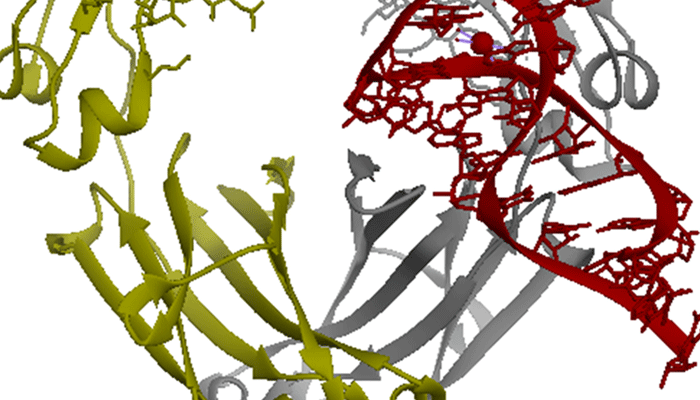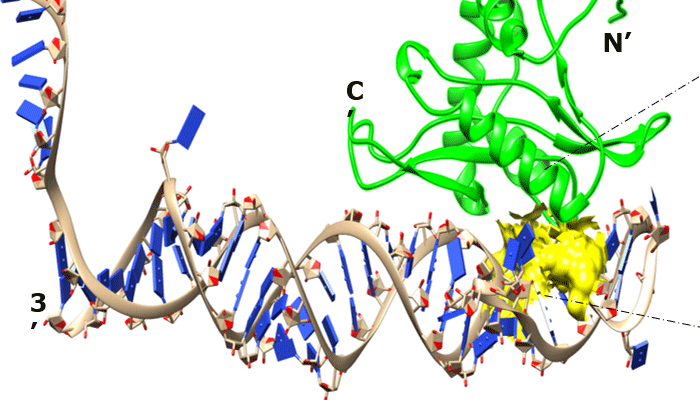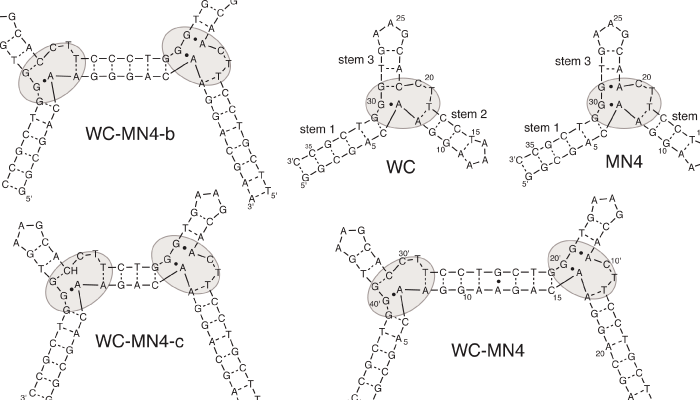
The minimum aptamer publication standards (MAPS guidelines) for de novo aptamer selection
REVIEW ARTICLE
![]()
ISSN: 2514-3247
Aptamers (2022), Vol 6, 10-18
Published online: 24 May 2022
Full Text (McKeague ~340kb) | (PubMed Central Record HTML) | (PubMed) | (References)
Maureen McKeague1, 2, Victoria Calzada3, Laura Cerchia4, Maria DeRosa5, Jennifer M Heemstra6, Nebojsa Janjic7, Philip E Johnson8, Leon Kraus9, Janice Limson10, Günter Mayer11, 12, Marit Nilsen-Hamilton13, 14, 15, David Porciani16, 17, Tarun Kumar Sharma18, 19,20, Beatrix Suess9, Julian A Tanner21, 22, Sarah Shigdar23, 24*
1Pharmacology and Therapeutics, Faculty of Medicine, McGill University, Montreal, QC H3G 1Y6, Canada
2Department of Chemistry, Faculty of Science, McGill University, Montreal, QC H3A 0B8, Canada
3Área de Radiofarmacia, Centro de Investigaciones Nucleares, Facultad de Ciencias, Universidad de la República, Montevideo 11400, Uruguay
4Institute of Experimental Endocrinology and Oncology “Gaetano Salvatore”, CNR, Via S. Pansini 5, 80131, Naples, Italy
5Department of Chemistry, 203 Steacie Building, Carleton University, 1125, Colonel By Drive, Ottawa, ON K1S 5B6, Canada
6Department of Chemistry, Emory University, Atlanta, Georgia, United States
7SomaLogic, Inc., 2945 Wilderness Place, Boulder, CO 80301, USA
8Department of Chemistry & Centre for Research on Biomolecular Interactions, York University, 4700 Keele St., Toronto, Ontario, Canada, M3J 1P3
9Department of Biology, TU Darmstadt, 64287 Darmstadt, Germany
10Biotechnology Innovation Centre, Rhodes University, Makhanda, 6140, South Africa
11Chemical Biology & Chemical Genetics, Life and Medical Sciences (LIMES) Institute, University of Bonn, 53121 Bonn, Germany
12Center of Aptamer Research & Development (CARD), University of Bonn, 53121 Bonn, Germany
13Roy J Carver Department of Biochemistry, Biophysics and Molecular Biology, Iowa State University, Ames, IA 50011, USA
14Ames Laboratory, US DOE (United States Department of Energy), Ames, IA 50011, USA
15Aptalogic Inc., Ames, IA 50014, USA
16Department of Molecular Microbiology and Immunology, University of Missouri School of Medicine, Columbia, MO 65212, USA
17Bond Life Sciences Center, University of Missouri, Columbia, MO 65201, USA
18Department of Medical Biotechnology, Gujarat Biotechnology University, Gujarat International Finance Tec-City, Gandhinagar, Gujarat 382355, India
19AptaBharat Innovation Pvt Ltd, BBB Bionest Bioincubator, NCR Biotech Science Cluster, 3rd Milestone, Faridabad – Gurgaon Expressway, PO box #04, Faridabad 121001, India
20Translational Research Group, Translational Health Science and Technology Institute, NCR Biotech Science Cluster, 3rd Milestone, Faridabad- Gurgaon Expressway, PO box #04, Faridabad- 121001, India
21School of Biomedical Sciences, Li Ka Shing Faculty of Medicine, The University of Hong Kong, Hong Kong SAR 999077, China
22Advanced Biomedical Instrumentation Centre, Hong Kong Science Park, Shatin, New Territories, Hong Kong SAR 999077, China
23School of Medicine, Deakin University, Geelong, VIC 3220, Australia
24Institute for Mental and Physical Health and Clinical Translation, School of Medicine, Deakin University, Geelong, VIC 3220, Australia
*Correspondence to: Sarah Shigdar, Email: sarah.shigdar@deakin.edu.au (on behalf of the International Society on Aptamers and the Aptamer Consortium)
Received: 16 March 2022 | Revised: 06 May 2022 | Accepted: 18 May 2022
© Copyright The Author(s). This is an open access article, published under the terms of the Creative Commons Attribution Non-Commercial License (http://creativecommons.org/licenses/by-nc/4.0). This license permits non-commercial use, distribution and reproduction of this article, provided the original work is appropriately acknowledged, with correct citation details.
ABSTRACT
Aptamers were first described in 1990 and since then many aptamers have been reported in the literature for numerous applications in both diagnostics and therapeutics. However, as with most fields, missing or unclear information presented in the publication makes it difficult to replicate some of the work described in the literature. To increase the reproducibility of the data and facilitate academic laboratories and industrial companies to develop reliable aptamer work, essential guidelines should be proposed and followed in any aptamer publication, especially in those that highlight de novo aptamer sequences. Here, we provide suggestions for authors, reviewers, and editors to follow when performing and reporting their aptamer work to ensure that we meet the minimum standards for publication of future aptamer sequences.
KEYWORDS: aptamers, guidelines, in vitro selection, minimum standards, reproducibility, SELEX



